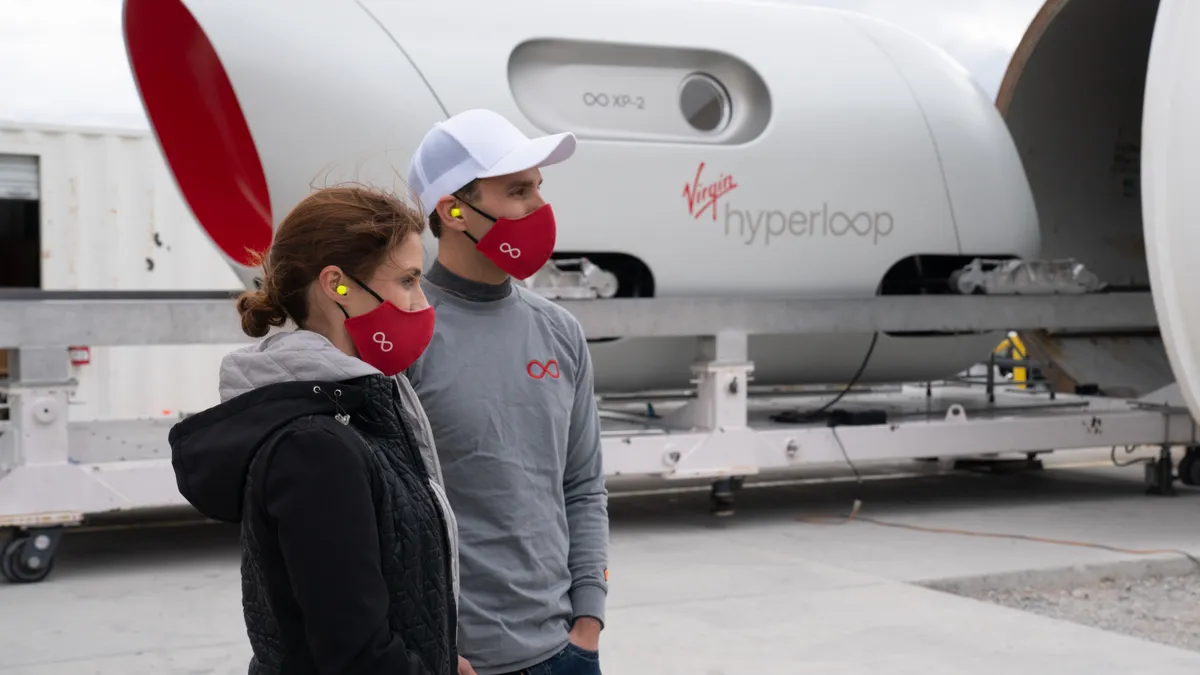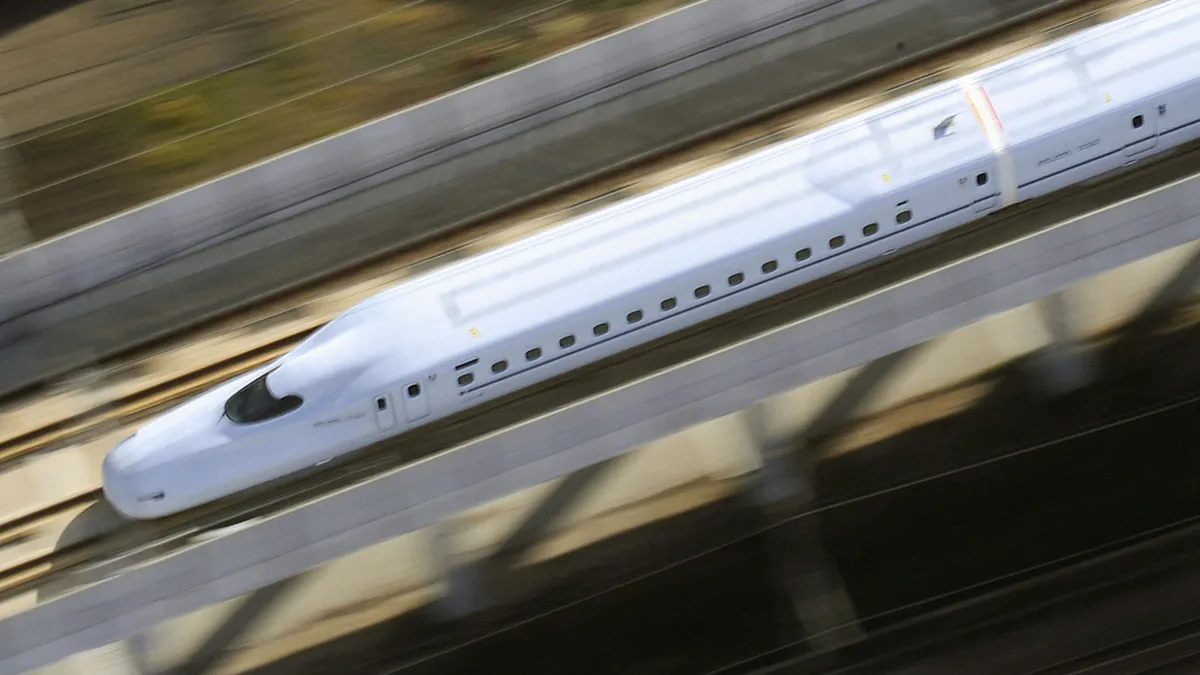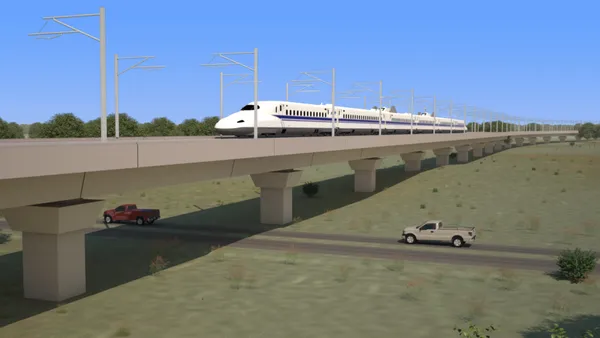Dive Brief:
- Virgin Hyperloop announced Sunday that it carried out the first human travel in one of its hyperloop pods. Company co-founder and CTO Josh Giegel and Director of Passenger Experience Sara Luchian were the first two passengers at Virgin Hyperloop’s DevLoop test site in Las Vegas.
- The two-seater XP-2 vehicle traveled for six seconds on the test track and reached a speed of 107 mph, Giegel said in an interview. Virgin Hyperloop had previously carried out more than 400 tests of its technology without passengers.
- Testing efforts were overseen by railway safety assessment and certification specialists CERTIFER. While Virgin Hyperloop officials noted that production vehicles will have 28 seats, this two-seater version demonstrated many of the safety and control systems that will be necessary for commercial service.
Dive Insight:
Virgin Hyperloop said this successful test with passengers represents a major step forward for the technology, and means the transportation can be used safely, at least in regards to this initial effort. While there is a ways to go in terms of development — the company hopes to have hyperloop pods travel at up to 600 mph — Luchian said this test is a significant milestone for the new transportation mode.
"It was just such a surreal moment, it was exhilarating," Luchian said. "And that was both physically and psychologically. I was moved by the magnitude of the moment and the fact that we are making history here."
While hyperloop is a nascent technology, companies have progressed toward making it a reality in part due to bipartisan federal support. Virgin Hyperloop last month announced it would build its Hyperloop Certification Center (HCC) in West Virginia on an 800-acre site, where construction is expected to begin next year. This announcement followed a guidance report issued by the U.S. Department of Transportation (USDOT) Non-Traditional and Emerging Transportation Technology (NETT) Council in July on various emerging transportation options and how they can be regulated and made safe for wide use.
The report says hyperloop can be safely integrated into the existing transportation system "through re-use, modification, and integration of existing (technical) standards from other transportation modes and (in some cases) non-transportation sectors." Giegel said that, coupled with the successful test, shows how the ground is being prepared.
"We were constantly being challenged that you couldn't build a company to do this, you couldn't build a system that would work," Giegel said. "We did that a couple years ago, but then couldn’t make it safe for passengers, couldn't put people on it, couldn't find the regulator. And the last couple of years, we consistently do it. And really, it's paradigm shifting."
Research and testing on hyperloop technology and the passenger experience will continue, and Luchian said this weekend’s test will be "hugely important" as the company looks to "craft an experience people have never really had before." That will likely include a discussion on whether the final pods will have windows and what other facilities are available, Luchian said.
"Being the very first person in has given me a greater sense of empathy for what it's like to try something so new and put your faith in the technology that you may not fully understand," Luchian said.











